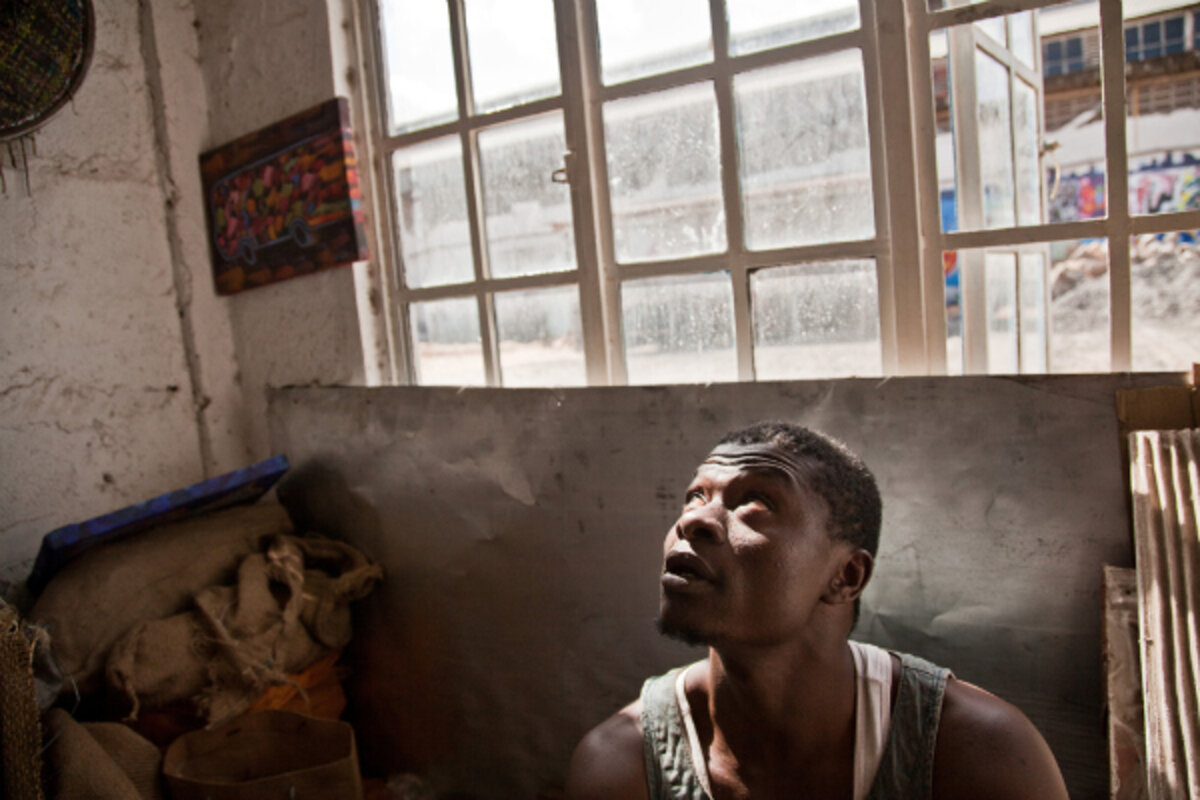Nairobi's artists struggle to rise above a waning art scene
Loading...
| Nairobi, Kenya
This post is part of the project chronicling life in Nairobi, Kenya throughout the month of April.
Midmorning Mondays, round the back of Nairobi’s middle class pubs, you’ll find Dickens Otieno waiting.
He’s after the empty beer and cider cans swept up after the weekend’s merrymaking. For this 32-year-old artist, trash tin is sprung tight with colorful potential, waiting to be reborn.
Otieno is one of the hundreds of painters and sculptors struggling to make a living in a city far from famous for its art, or its art market.
Galleries are closing, the few art buyers are hit by the economic crisis, and allegations swirl of cartels of middlemen manipulating international dealers into choosing work by a select few.
A year ago, as paint prices rose and picture sales fell, Otieno switched from brush and canvas to metal cutters and tin. At least his raw materials were now free.
Today, in his rented corner of a studio in an artists’ enclave in Nairobi’s Industrial Area, he’s experimenting with what he calls “weaving”.
On a mesh of chicken wire, he’s feeding strips of tin in and out, creating a patchwork of woven metal which becomes his new canvas. Last year, he sold six pieces crafted from this novel approach, for as much as $600 each.
“The market here only wants Masai figures or wild animals, that’s what the tourists buy, that’s what people here understand,” he said.
“You need courage to risk to do experiments with your own way, we all need money and these things are hard to sell. But I cannot copy others, I will get bored. I need to discover the best ways to express myself.”
The “risk” he talks about is that the few spots around Nairobi where art is displayed and sold will refuse your work if it is too unconventional.
The city’s best-known modern art gallery, RaMoMa, closed last year. Another, Gallery Watatu, has been recently refurbished but it is not yet clear if it will take experimental work from local newcomers.
Without space to exhibit, many here fear they will never win the exposure they need to break into big-money international markets which have so far focused on work coming out of Africa’s west and south.
“I have to say there are some places here which have a kind of goodwill towards artists, but they are still wanting a certain type of painting,” said Tom Mboya, who shares Otieno’s studio.
“It’s a small market, and it’s getting smaller. I worked nine years in the hotel industry before finishing and starting painting. It’s my passion, but none of us can say we are in this to make good money.”
Beside him, Esther Mukuhi, who works from the same shared studio, nodded in agreement.
“I know of many of us who are turning away from art and looking to open some small kind of business,” she said. “Nowadays, it is too hard to sell art and make a living.”
Despite the challenges, however, there is hope. In the studio next door, Dickson Kaloki stood before a painting of a ghostly female figure overlaid by the outlines of slum shacks.
“This to me is about how politicians and big people use us in the slums, the same way that some men exploit women,” he said. “These are things people need to see, to be reminded about. Who will do that, in a way which remains in the future, if it is not artists?”




